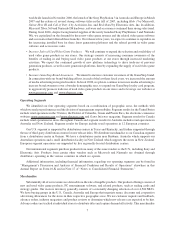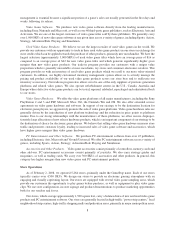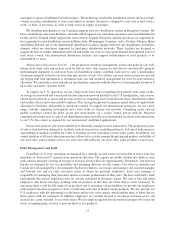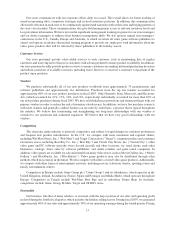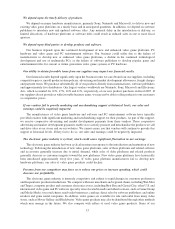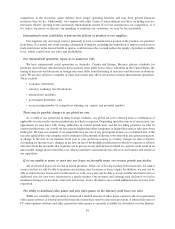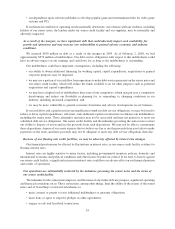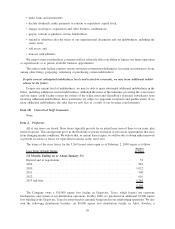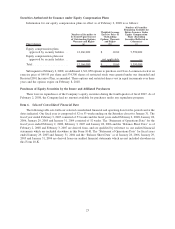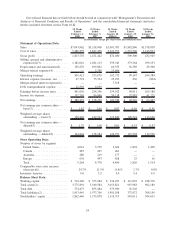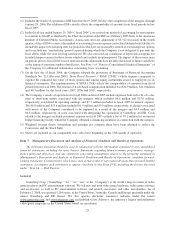GameStop 2007 Annual Report Download - page 32
Download and view the complete annual report
Please find page 32 of the 2007 GameStop annual report below. You can navigate through the pages in the report by either clicking on the pages listed below, or by using the keyword search tool below to find specific information within the annual report.If advances in technology continue to expand our customers’ ability to access software through these and other
sources, our customers may no longer choose to purchase video games or PC entertainment software in our stores.
As a result, sales and earnings could decline.
If we fail to keep pace with changing industry technology, we will be at a competitive disadvantage.
The interactive entertainment industry is characterized by swiftly changing technology, evolving industry
standards, frequent new and enhanced product introductions and product obsolescence. These characteristics
require us to respond quickly to technological changes and to understand their impact on our customers’
preferences. If we fail to keep pace with these changes, our business may suffer.
An adverse trend in sales during the holiday selling season could impact our financial results.
Our business, like that of many retailers, is seasonal, with the major portion of our sales and operating profit
realized during the fourth fiscal quarter, which includes the holiday selling season. During fiscal 2007, we generated
approximately 40% of our sales and approximately 58% of our operating earnings during the fourth quarter. Any
adverse trend in sales during the holiday selling season could lower our results of operations for the fourth quarter
and the entire year.
Our results of operations may fluctuate from quarter to quarter, which could affect our business, finan-
cial condition and results of operations.
Our results of operations may fluctuate from quarter to quarter depending upon several factors, some of which
are beyond our control. These factors include:
• the timing and allocations of new product releases;
• the timing of new store openings; and
• shifts in the timing of certain promotions.
These and other factors could affect our business, financial condition and results of operations, and this makes
the prediction of our financial results on a quarterly basis difficult. Also, it is possible that our quarterly financial
results may be below the expectations of public market analysts.
Our failure to effectively manage new store openings could lower our sales and profitability.
Our growth strategy is largely dependent upon opening new stores and operating them profitably. We opened
586 stores in fiscal 2007 and expect to open approximately 575 to 600 new stores in fiscal 2008. Our ability to open
new stores and operate them profitably depends upon a number of factors, some of which may be beyond our
control. These factors include:
• the ability to identify new store locations, negotiate suitable leases and build out the stores in a timely and
cost efficient manner;
• the ability to hire and train skilled associates;
• the ability to integrate new stores into our existing operations; and
• the ability to increase sales at new store locations.
Our growth will also depend on our ability to process increased merchandise volume resulting from new store
openings through our inventory management systems and distribution facilities in a timely manner. If we fail to
manage new store openings in a timely and cost efficient manner, our growth may decrease.
If our management information systems fail to perform or are inadequate, our ability to manage our
business could be disrupted.
We rely on computerized inventory and management systems to coordinate and manage the activities in our
distribution centers, as well as to communicate distribution information to the off-site, third-party operated
17


